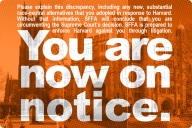You have /5 articles left.
Sign up for a free account or log in.
Colleges and employers have their work cut out for them in helping today's young people navigate the fast-changing economic and technological environment in which they are coming of age, given their often-conflicting attitudes and traits, a new book argues.
The book, Generation on a Tightrope: A Portrait of Today’s College Student (Jossey Bass), uses surveys of students and college officials, interviews from campus visits, and other data to characterize the current crop of college-age Americans as confounded by a series of contradictions -- and, in turn, often confounding to parents, colleges and employers trying to understand them. Coming of age in the deepest recession in 70 years, yet eager for the economic opportunities their parents enjoyed. In a hurry to be grownups, but more dependent on the adults around them than any modern generation. Global citizens in theory, but ignorant of other cultures. Always in touch, but hampered in face-to-face communication. And perhaps most importantly, digital natives, but maneuvering in a still-largely-analog world.
It is incumbent on colleges to "gear their education to the strengths and weaknesses of the people coming in the door," just as it is for parents, employers and other institutions responsible for helping children become adults to adapt their work, says Arthur Levine, president of the Woodrow Wilson National Fellowship Foundation and (with Diane R. Dean, an assistant professor of higher education policy at Illinois State University) a co-author of the book.
Levine has produced a portrait of a generation of college students roughly every 15 years, with previous studies coming in 1980 (When Dreams and Heroes Died) and 1998 (When Hope and Fear Collide). Levine says he fully expected this iteration to portray the current crop of young people as irrevocably shaped by the events of September 11, 2001. But when asked to name the defining event of their lives, more of today's college-age youth cited the emergence of the World Wide Web than any other, including September 11.
Technology defines so many things about them, Levine and Dean write, for good and bad. They are extremely connected, and yet isolated; while they are "in 24/7 contact with a tribe of friends, family and acquaintances via social media, they are more alone in many of the activities they pursue," with only a third of undergraduates reporting that they attend college social and community events at least once a month. This connectedness/isolation contradiction makes them "weak in interpersonal skills, face-to-face communication skills, and problem-solving skills."
Among the parties with whom they are in near-constant contact are their parents. "Unlike other generations that called home once a week, two out of five students (41 percent) are in touch with parents by phone, e-mail, text or visit at least daily," the report states. "One in five (19 percent) is in contact three or more times a day." That is reflective of a dependence on parents and other adults (attributable in part to coddling by said parents) that leaves many of them underprepared to enter the world on their own, and leaves many college deans and other officials telling the authors that "the biggest change on campus since 2001 is parent involvement -- and sometimes intrusion -- on campus."
For all the discussion of today's young people as digital natives, Levine says, they are perhaps most analogous to those born in 1850, just as the first part of the Industrial Revolution was ending and the second one was getting under way. Those "industrial natives," as Levine calls them, had seen the emergence of welding and canals and early factories, but steel and oil and electricity were largely still to come, greatly accelerating the pace of change for those young people.
Today's digital natives, born at the early stages of today's digital revolution, probably face a similar fate, as "it seems likely that we're about to confront accelerating and deeper change than we've gone through so far," Levine says.
Yet they are not necessarily well-positioned to deal with an environment in a constant state of change, he says, given their lack of independence, the fact that they are largely "rules followers at a time when rules are changing," and their relative ignorance about the rest of the world.
The book, Generation on a Tightrope: A Portrait of Today’s College Student (Jossey Bass), uses surveys of students and college officials, interviews from campus visits, and other data to characterize the current crop of college-age Americans as confounded by a series of contradictions -- and, in turn, often confounding to parents, colleges and employers trying to understand them. Coming of age in the deepest recession in 70 years, yet eager for the economic opportunities their parents enjoyed. In a hurry to be grownups, but more dependent on the adults around them than any modern generation. Global citizens in theory, but ignorant of other cultures. Always in touch, but hampered in face-to-face communication. And perhaps most importantly, digital natives, but maneuvering in a still-largely-analog world.
It is incumbent on colleges to "gear their education to the strengths and weaknesses of the people coming in the door," just as it is for parents, employers and other institutions responsible for helping children become adults to adapt their work, says Arthur Levine, president of the Woodrow Wilson National Fellowship Foundation and (with Diane R. Dean, an assistant professor of higher education policy at Illinois State University) a co-author of the book.
Levine has produced a portrait of a generation of college students roughly every 15 years, with previous studies coming in 1980 (When Dreams and Heroes Died) and 1998 (When Hope and Fear Collide). Levine says he fully expected this iteration to portray the current crop of young people as irrevocably shaped by the events of September 11, 2001. But when asked to name the defining event of their lives, more of today's college-age youth cited the emergence of the World Wide Web than any other, including September 11.
Technology defines so many things about them, Levine and Dean write, for good and bad. They are extremely connected, and yet isolated; while they are "in 24/7 contact with a tribe of friends, family and acquaintances via social media, they are more alone in many of the activities they pursue," with only a third of undergraduates reporting that they attend college social and community events at least once a month. This connectedness/isolation contradiction makes them "weak in interpersonal skills, face-to-face communication skills, and problem-solving skills."
Among the parties with whom they are in near-constant contact are their parents. "Unlike other generations that called home once a week, two out of five students (41 percent) are in touch with parents by phone, e-mail, text or visit at least daily," the report states. "One in five (19 percent) is in contact three or more times a day." That is reflective of a dependence on parents and other adults (attributable in part to coddling by said parents) that leaves many of them underprepared to enter the world on their own, and leaves many college deans and other officials telling the authors that "the biggest change on campus since 2001 is parent involvement -- and sometimes intrusion -- on campus."
For all the discussion of today's young people as digital natives, Levine says, they are perhaps most analogous to those born in 1850, just as the first part of the Industrial Revolution was ending and the second one was getting under way. Those "industrial natives," as Levine calls them, had seen the emergence of welding and canals and early factories, but steel and oil and electricity were largely still to come, greatly accelerating the pace of change for those young people.
Today's digital natives, born at the early stages of today's digital revolution, probably face a similar fate, as "it seems likely that we're about to confront accelerating and deeper change than we've gone through so far," Levine says.
Yet they are not necessarily well-positioned to deal with an environment in a constant state of change, he says, given their lack of independence, the fact that they are largely "rules followers at a time when rules are changing," and their relative ignorance about the rest of the world.
"Taken as a whole,... the research indicates that these students will not be prepared for the world they will enter," Dean says -- and it falls to parents, colleges and others to "make adjustments to better-mold coming generations."
Parents will own much of the responsibility for addressing those problems, "and by the time we get them in college, a lot of the cards have been dealt," says Levine. But he and Dean offer several recommendations of steps that colleges might take to deal with the discordant traits of their students, including:
- Focusing on developing critical thinking skills, creativity, and continuous learning, which students will need to deal with the fast-changing nature of knowledge and technology in their careers and lives.
- Changing how they educate the digital natives -- "employing calendars, locations, pedagogies, and learning materials consistent with the ways our students learn most effectively.... Brick campuses will emphasize enriching, expediting, expanding and supplementing face-to-face education with enhanced instruction and expanded services and resources that enlarge the scope and reach of the campus. At click campuses, technology is the primary means by which instruction, services and resources are provided. Institutions choosing to be brick will need to be more brick than ever before if they are to attract students given the wealth of cheaper alternatives available."
- Introduce "practical minors, internships, and put career counseling on steroids."
Institutions have more than a societal obligation to try to better-prepare students for their later lives, Levine says; self-interest is in play, too. "Colleges that continue to operate in an analog way with digital students are in danger of becoming an anachronism," he says. "They need to remain relevant in a new kind of world."

Want articles like this sent straight to your inbox?
Subscribe to a Newsletter








